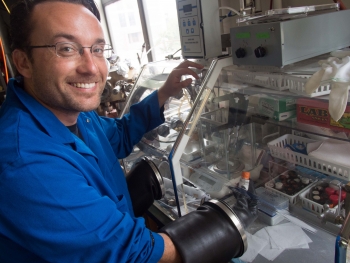
School:
Grade Level:
Teaching Position:
Supervisor:
Department:
Mentor:
Research Project Year:
Research Project Title:
Research Project Description:
Catalysis represents an important area of research. Society depends upon catalysts to more efficiently crack petroleum products from crude oil, reduce criteria pollutants from said combustion and on a biochemical basis as enzymes. Traditional catalysts in the industrial realm have been in the form of bulk catalysts. Chemically speaking bulk catalysts behave classically. Some common bulk catalysts can be found in automotive catalytic converters.
One important area of catalysis research is nanoparticle catalysis. Nanoparticles are an important area of research because the catalysts behave according to quantum mechanics on a nanoparticle level. This is totally different from how traditional catalysts behave. These nanoparticle catalysts offer promises of higher reaction conversion rates with better selectivity. Since less raw materials are also required to create the nanoparticle catalysts, nanoparticle catalysts suggest increased value. At the Gordon Chemical Engineering Lab at UCSB we aim to study nanoparticle catalysts. This study aimed at comparing the effectiveness of V2O5 nanoparticle catalysts for the oxidative dehydration of methanol to formaldehyde.
Research Project Attachments:
| Attachment | Size |
|---|---|
| 16.52 MB |
Curriculum Project Year:
Curriculum Project Title:
Curriculum Project Description:
This curriculum introduces students to the field of clean technology, a growing field with a plethora of career choices. It supplements the high school chemistry curriculum but could be adapted for 8th grade physical science depending upon the math level. It is more geared towards high school as stoichiometry is well beyond the scope of middle school. Students learn about clean combustion through inquiry and computer simulations into the gas laws, novel combustion and catalysis labs and a custom made air pollution control case study.
